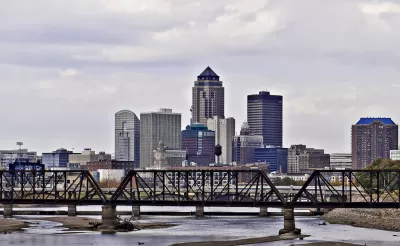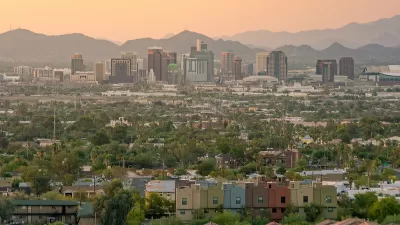As major cities draw in wealth and population, midsized metros may be getting less attention than they deserve. After all, many of their economic, demographic, and political challenges resemble those of the nation as a whole.

For Brookings, Alan Berube makes the case that policymakers and urbanists should devote greater attention to America's midsize metros: places with between 250,000 and 1 million residents.
He discusses research seeking "a middle ground between what urbanist Jason Segedy calls the U-Haul School of Urban Policy—that government policy should focus primarily on enabling people to relocate to places with greater economic opportunity—and the notion that public spending can and should prop up highly economically distressed small towns all across the American landscape." That middle ground may well involve a pivot to places like Des Moines and Cedar Rapids.
Berube explores several reasons why a focus on midsized metros makes sense. For one thing, their scale can make them good testing grounds for policy solutions. "[Midsized metros] arguably retain the requisite scale to offer a distinctive economy and quality of life to their businesses and residents. Moreover, their size may also facilitate the sort of pragmatic, cross-sector problem solving that often bedevils larger metro areas."
Compared to both large cities and rural places, their demographics and politics also track better with those of the nation as a whole. So do some of their economic challenges. Midsized metros are an "especially important feature of the Heartland," Berube notes, and their ability to "successfully navigate racial and ethnic transitions, and to continue to evolve their economies from production to services, may [...] be critical harbingers for our nation's abilities to do so overall."
FULL STORY: Why midsized metro areas deserve our attention

Alabama: Trump Terminates Settlements for Black Communities Harmed By Raw Sewage
Trump deemed the landmark civil rights agreement “illegal DEI and environmental justice policy.”

Study: Maui’s Plan to Convert Vacation Rentals to Long-Term Housing Could Cause Nearly $1 Billion Economic Loss
The plan would reduce visitor accommodation by 25% resulting in 1,900 jobs lost.

Why Should We Subsidize Public Transportation?
Many public transit agencies face financial stress due to rising costs, declining fare revenue, and declining subsidies. Transit advocates must provide a strong business case for increasing public transit funding.

Paris Bike Boom Leads to Steep Drop in Air Pollution
The French city’s air quality has improved dramatically in the past 20 years, coinciding with a growth in cycling.

Why Housing Costs More to Build in California Than in Texas
Hard costs like labor and materials combined with ‘soft’ costs such as permitting make building in the San Francisco Bay Area almost three times as costly as in Texas cities.

San Diego County Sees a Rise in Urban Coyotes
San Diego County experiences a rise in urban coyotes, as sightings become prevalent throughout its urban neighbourhoods and surrounding areas.
Urban Design for Planners 1: Software Tools
This six-course series explores essential urban design concepts using open source software and equips planners with the tools they need to participate fully in the urban design process.
Planning for Universal Design
Learn the tools for implementing Universal Design in planning regulations.
Smith Gee Studio
Alamo Area Metropolitan Planning Organization
City of Santa Clarita
Institute for Housing and Urban Development Studies (IHS)
City of Grandview
Harvard GSD Executive Education
Toledo-Lucas County Plan Commissions
Salt Lake City
NYU Wagner Graduate School of Public Service





























